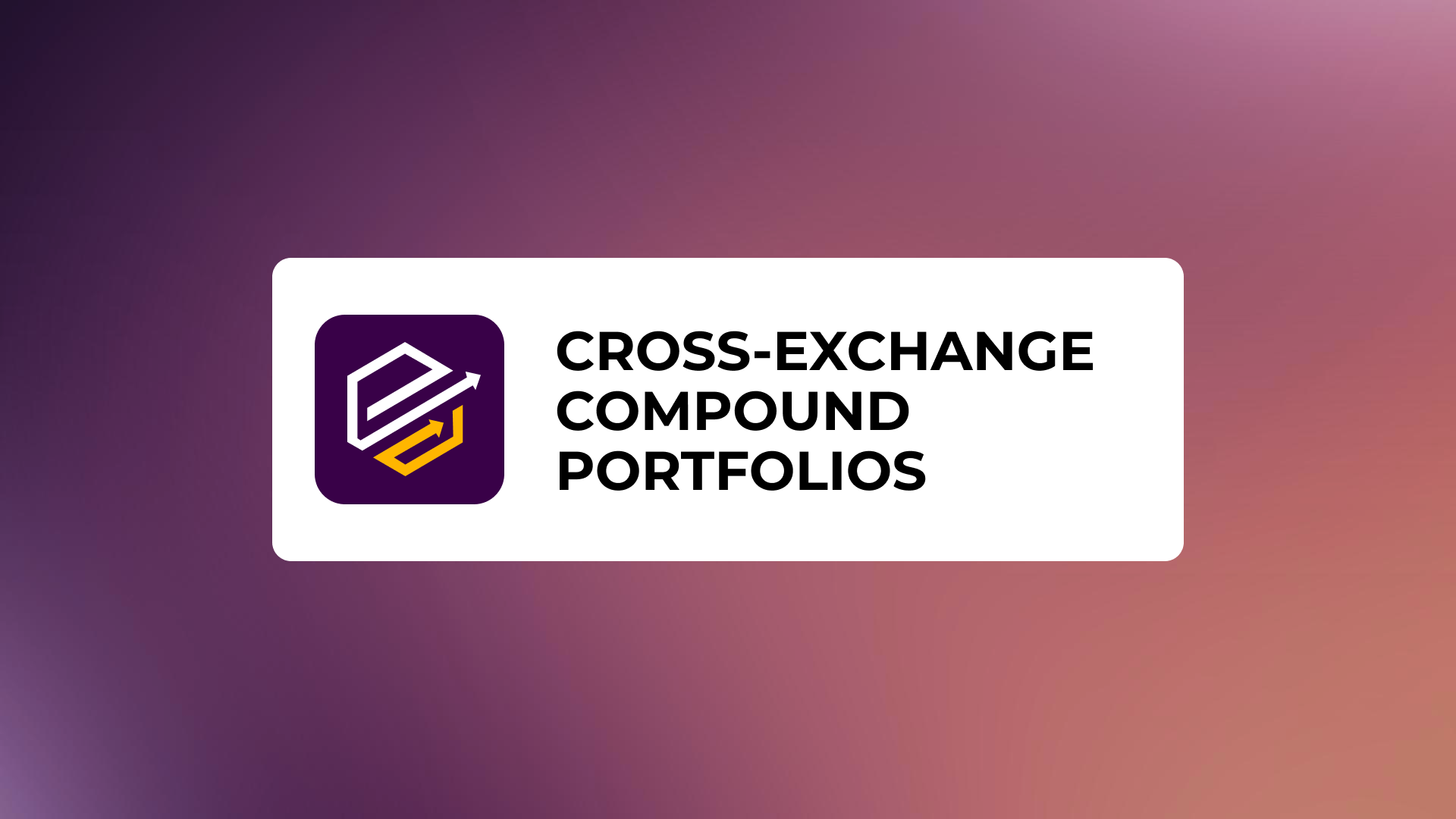Cross-Exchange Compound Portfolios: The History and Current State of Aggregating Trading Accounts Statistics

Many of you are already familiar with the compound portfolio feature on TradeLink Passport, which allows you to combine multiple API keys from a single exchange into one portfolio. This convenient solution helps traders get a comprehensive view of their trading performance and track all statistics in one place.
However, not everyone knows that the platform once supported cross-exchange compound portfolios. This feature allowed traders to merge keys from multiple exchanges into a single portfolio, making it possible to showcase trading results across different exchanges with just one convenient link.
Contents
- The History of Cross-Exchange Compound Portfolios
- The Challenges We Faced
- The Current State of Compound Portfolios
The History of Cross-Exchange Compound Portfolios
The cross-exchange portfolio feature was introduced at the end of 2022. We developed a tool that successfully aggregated data from different exchanges and kept it running for a year and a half. Unfortunately, in mid-2024, we had to discontinue support for this feature due to two key reasons:
- Challenges in maintaining the functionality due to the specificities of exchanges.
- Low demand for the feature among users.
The Challenges We Faced
To understand why maintaining cross-exchange compound portfolios became economically unviable, let’s take a closer look at how TradeLink Passport works.
Every portfolio on the platform is calculated based on raw data provided through the exchanges’ APIs. This data includes:
- Trades and their impact on the balance,
- Deposits and withdrawals,
- Dozens of other actions, such as funding fees, liquidations, and auto-deleveraging closures.
Challenge #1: Data Unification
Each exchange provides data in its unique format. For example, an open order on Binance may differ significantly in structure from an open order on Bybit. To address this, we had to create a universal data model capable of:
- Retrospectively processing new data types added by exchanges after API integration.
- Handling complex portfolios with dozens of keys and three years of history in under a minute.
- Supporting over 100 indicators while ensuring accurate statistics in more than 98% of cases.
Challenge #2: Exchange API Limitations
Many exchanges provide incomplete data via their APIs and rarely notify users of updates or changes. This forced us to manually analyze and classify every new type of action.
For example, integrating OKX revealed 317 distinct action types, each requiring individual classification. Processing a single new action could take up to three working days for two specialists.
Challenge #3: Maintenance Costs
Maintaining multiple exchanges with such a high volume of data required significant resources. These costs rendered the feature economically unviable, especially given that cross-exchange compound portfolios didn’t become a widely demanded feature among users.
To overcome this challenge, we would need to accumulate a significant amount of data. If we had 10,000 user API keys with trading history for each exchange, we could automate the processing of most new operation types, eliminate hundreds of hours of manual work, and ensure accurate statistics. This approach would simplify support and enable us to deliver a high-quality service.
The Current State of Compound Portfolios
Cross-exchange compound portfolios were an ambitious feature that required significant effort to develop and maintain. Despite temporarily discontinuing their support, we continue to focus on enhancing other aspects of the platform to make portfolio management as seamless and valuable as possible for all users.
Fortunately, single-exchange compound portfolios remain available on TradeLink Passport. While simplified, they are still a unique and highly useful tool! This feature allows you to create portfolios from multiple accounts on a single exchange, such as Binance or Bybit. You can combine multiple API keys from different accounts (e.g., main and sub-accounts) on the same exchange to conveniently monitor and display statistics in one place.
Compound portfolios still provide the ability to:
- Analyze the performance of multiple accounts in a single view.
- Easily share statistics using one link.
- Save time by eliminating the need for manual data consolidation.
If you have multiple trading accounts on a single exchange, combine them into a compound portfolio on TradeLink Passport and see how much easier it makes analyzing your overall trading performance.
For detailed instructions on setting up a single-exchange compound portfolio, check out our guide: https://tradelink.pro/blog/2023/01/10/what-is-single-exchange-compound-portfolios/
Thank you for being part of our journey!